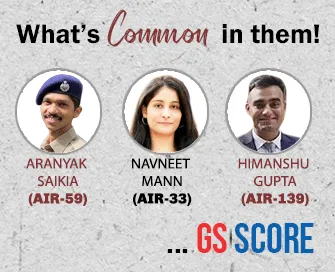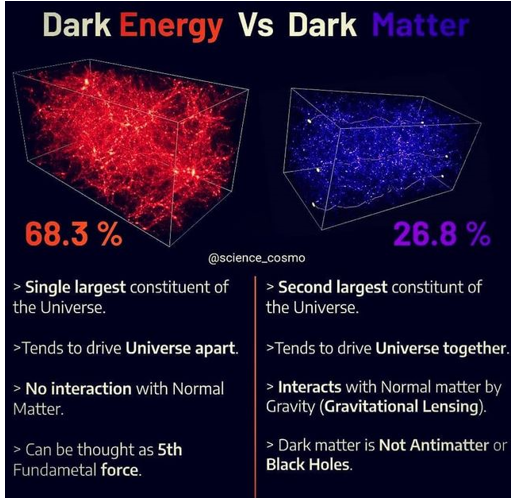

22nd February 2022 (6 Topics)
Context
A recent hypothesis says that dark matter comprises a large number of compact objects such as primordial black holes.
About
Dark Matter Vs Dark Energy:
- Dark matter works like an attractive force, a kind of cosmic cement that holds our universe together.
- This is because dark matter does interact with gravity, but it doesn’t reflect, absorb, or emit light.
- Meanwhile, dark energy is a repulsive force, a sort of anti-gravity that drives the universe’s ever-accelerating expansion.
- Dark energy is the far more dominant force of the two, accounting for roughly 68 percent of the universe’s total mass and energy.
- Dark matter makes up 27 percent. And the rest, a measly 5 percent is all the regular matter we see and interact with every day.
- In short, dark matter slows down the expansion of the universe, while dark energy speeds it up.
What is the recent proposition?
- When the universe was very young, hot and dense – soon after the Big Bang, it must have had quantum fluctuations of its density.
- This, in turn, would have caused some regions to become extremely dense, and therefore, to collapse under their own gravity to form the primordial black holes.
- While we have no conclusive evidence of spotting these objects, some of the binary black hole mergers detected by the LIGO gravitational wave detectors might be primordial black holes.
- The question is open there is good reason to believe that primordial black holes did form in the young universe.
Observing dark matter: Gravitational Lensing
- The paper explores what happens when such objects get in the way of gravitational waves traveling towards the Earth from the distance.
- It invokes a phenomenon called gravitational lensing that is used regularly in astronomy.
|
What Is Gravitational Lensing?
|


